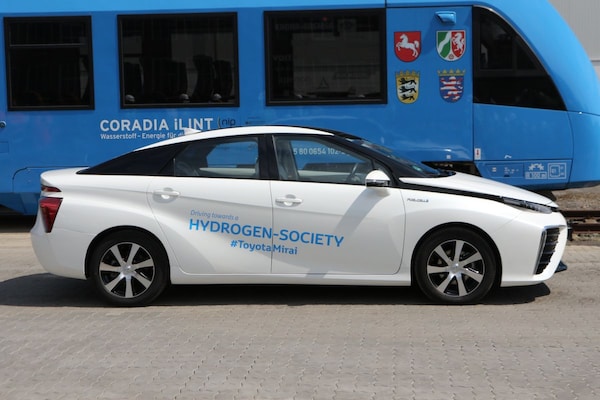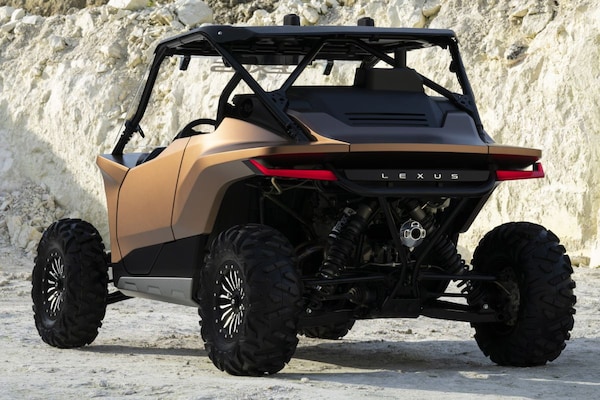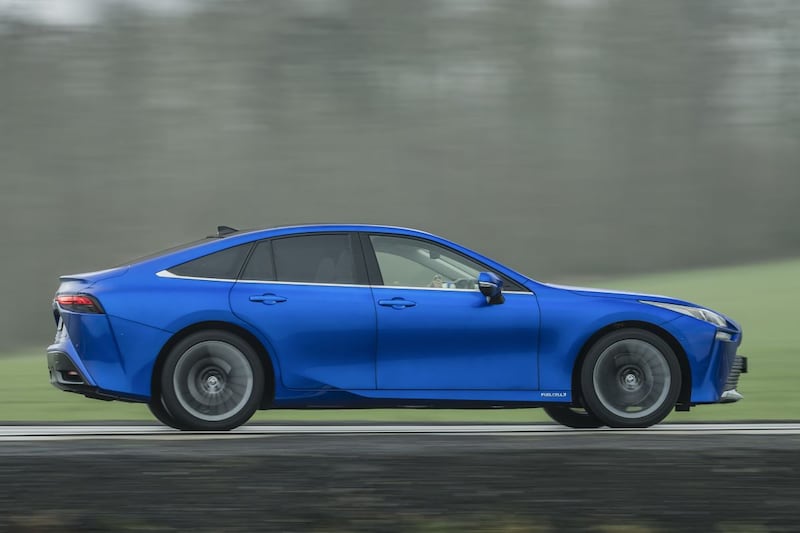Toyota will start producing fuel cells of a new generation in Brussels this month. For the time being, it is a pilot, but the factory in Zaventem is ready to scale up, the Japanese manufacturer promises.
Opinions in the automotive industry have become increasingly divided in recent years about the future of hydrogen in passenger cars. Many major car manufacturers have put fuel cell technology on hold and are now aiming exclusively at battery-electric passenger transport. At the other end of the spectrum are Toyota, Hyundai and Honda, who do see some potential in it. The future of hydrogen technology in heavy road transport is hardly under discussion. After all, if you provide a large truck with sufficient battery capacity to achieve the desired range, far too much of the charging capacity is lost. In addition, hydrogen can play an important role in shipping and there are even opportunities for fuel cell applications in aviation.

Toyota Mirai
spearhead
That is why Toyota is also focusing more widely on hydrogen in addition to the second generation of the Mirai, as we heard during the annual Kenshiki forum, which was recently held in Brussels. There we also spoke with Thiebault Paquet, who is responsible for the development of hydrogen technology at Toyota Motors Europe, and Ferry Franz, who is in charge of the business part of hydrogen technology at TME.
According to Franz, the road to CO2 neutrality in Europe is moving faster than in most other regions and fuel technology is an important tool in this regard. In fact, it is one of the keys to achieving the Green Deal goal of zero global warming by 2050,” he says. “The European Union therefore needs forerunners to develop commercial yet green applications. Think of green hydrogen, energy storage and CCS (see box, ed.). An important spearhead is setting up a good infrastructure for hydrogen. To this end, there will be no more than 150 kilometers between two hydrogen filling stations on the main European routes.”
pilot
Paquet emphasizes that Toyota will and can play an important role in this. “We have been working on fuel cell technology since 1992,” he says. “That year we built 177 cars with a fuel cell, between 2014 and 2017 there were 700 per year and since 2020 we have been making 30,000 hydrogen-powered cars every year. We have previously redesigned the Mirai’s fuel cell into compact modules that can be used for all kinds of applications. We have now started building the second generation of our fuel cell. It is lighter and more compact, improving energy density by 54 percent. These properties make the new fuel cell more versatile. In addition, we build it in two different shapes, a cube and a lower rectangular shape,” says Paquet. He explains that this choice is important for many customers. For example, the cube fits better in a truck, while the flatter shape is more suitable for installation in a bus.
Because Europe is working so energetically with hydrogen, Toyota is also producing its new fuel cell here, to be precise in Zaventem, near Brussels. “It’s not just about producing close to potential customers, we can also better assist them in integrating our fuel cells into their products that way. In addition, this allows us to better identify emerging initiatives. For now it is a pilot, but we are ready to ramp up production at the right time.”

Lexus ROV Concept
Hydrogen without a fuel cell
In addition to a fuel cell, hydrogen can also be used in a conventional fuel engine, because we have known since the Hindenburg that it burns excellently. Toyota already tried that in a racing version of the Corolla and now it has also converted an experimental Yaris, which runs on hydrogen instead of petrol with minimal adjustments. Although it is not CO2-neutral, hydrogen does burn cleaner than petrol. Lexus is also experimenting with that technique in the ROV Concept.

Toyota GR Yaris Hydrogen
Grey, blue or green hydrogen
Hydrogen is produced by splitting water (H2O) into oxygen (O2) and hydrogen (H2). This process requires (electrical) energy. The oxygen goes into the atmosphere, the hydrogen is stored. Later (and elsewhere if necessary), the hydrogen in a fuel cell can again combine with oxygen from the air in water. This process releases electrical energy. The oxygen that is withdrawn from the atmosphere for this purpose went into it earlier, during electrolysis. The only emission from a fuel cell is water, which was previously extracted from the ecosystem. That sounds ideal, but it does require some nuance. The extent to which hydrogen is CO2-neutral depends on the way in which the energy that goes into it at the beginning of the chain is generated. At the moment, this is still mostly with coal or gas-fired power stations that emit CO2, in those cases we speak of gray hydrogen. When these power stations engage in CO2 capture (CCS, carbon capture and storage, the released CO2 is captured and kept out of the atmosphere by means of underground storage), we speak of blue hydrogen. When the hydrogen is produced by electricity generated with sustainable resources, such as wind turbines, solar panels or tidal power stations, we can call it green hydrogen. According to critics, it is still not necessarily completely green, because the hydrogen still has to be transported from the production site to the refueling location.
– Thanks for information from Autoweek.nl
